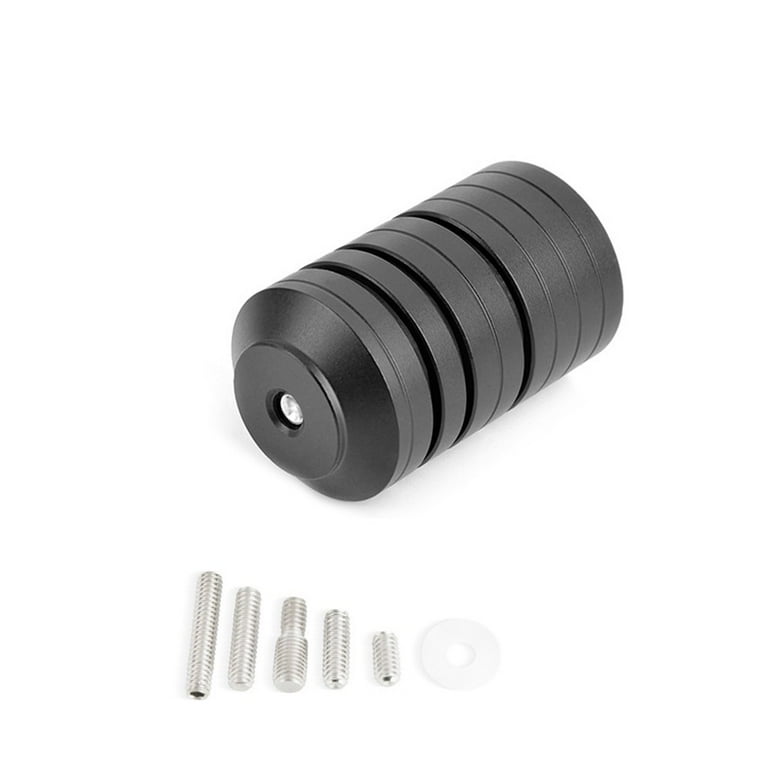Bow Stabilizer Buying Guide: Whatever You Need to Know Before You Purchase
Maximize Your Archery Accuracy With These Bow Stabilizer Methods
In the world of archery, attaining optimum precision is a pursuit that demands precise interest to information and strategy. One crucial aspect that can substantially influence your efficiency is the correct application of bow stabilizers. These often-overlooked accessories hold the potential to elevate your shooting proficiency to new heights, but only if employed properly. By checking out the nuanced methods of picking, setting up, and adjust bow stabilizers, archers can open a world of precision that may have previously eluded them. Whether you are a seasoned archer wanting to refine your skills or a newcomer eager to boost your precision, understanding these bow stabilizer methods might be the key to striking your mark with unparalleled uniformity.
Advantages of Utilizing Bow Stabilizers
Utilizing bow stabilizers can substantially boost an archer's precision and total performance by decreasing bow torque and vibration. Additionally, bow stabilizers moisten resonance, which not just improves the comfort of capturing but likewise protects against the bow from jumping upon launch, thus helping in keeping proper objective.
Furthermore, bow stabilizers can help in holding the bow constant, especially during gusty problems or when firing from longer distances. The added weight at the front of the bow gives security and balance, enabling the archer to concentrate on intending without the distraction of bow motion. On the whole, the benefits of using bow stabilizers prolong past simply precision, boosting the archer's experience and performance in various shooting situations.
Picking the Right Bow Stabilizer
Picking the appropriate bow stabilizer is important for maximizing your archery tools and boosting shooting performance. When choosing a bow stabilizer, there are several elements to think about to guarantee you discover the appropriate suitable for your demands. Consider the weight of the stabilizer. Heavier stabilizers can help decrease bow torque and take in even more resonance, causing a steadier goal. Lighter stabilizers offer more maneuverability, which can be advantageous in certain shooting situations.

Last but not least, take into consideration the design of the stabilizer. Some stabilizers include adjustable weights or dampeners that allow you to personalize the balance and feel of your bow. Eventually, selecting the ideal bow stabilizer includes discovering a balance between weight, material, design, and length to improve your capturing accuracy and overall performance.
Correct Installation Techniques
To make sure optimum efficiency and safety and security in archery, understanding correct installment strategies for your bow stabilizer is crucial. The initial action in mounting a bow stabilizer is to recognize the right positioning on your bow.
Next, securely attach the stabilizer to the bow using the appropriate mounting equipment. It is crucial to tighten up the stabilizer well to stop any type of wobbling during shots. Some stabilizers come with flexible weights that can be find more info included or eliminated to tweak the balance of your bow. Experiment with various weight arrangements to discover the optimal equilibrium that matches your capturing style.

Readjusting Stabilizer Weight and Length
After guaranteeing the appropriate setup of your bow stabilizer, the next step involves adjusting the weight and length to optimize its efficiency in boosting archery precision. The weight of the stabilizer plays a crucial duty in lessening bow activity throughout the shot cycle.
A longer stabilizer can give higher stability by raising the range between the bow and the weight at the end of the stabilizer. Alternatively, a much shorter stabilizer provides more ability to move and may be favored by archers that value agility and fast motions throughout capturing.
Advanced Stabilizer Tuning Tips
Achieving optimum bow stability and accuracy in archery requires a nuanced method to innovative stabilizer adjusting. Advanced stabilizer tuning entails fine-tuning different parts to improve the bow's equilibrium, minimize vibration, and enhance overall precision. One key strategy is to try out various stabilizer configurations, consisting of side-bar and back-bar arrangements, to find the suitable balance in between stability and maneuverability for your capturing style. bow stabilizer. Furthermore, adjusting the angle and positioning of the stabilizer can have a considerable influence on exactly how the bow responds upon release.
An additional critical facet of innovative stabilizer adjusting is maximizing the damping buildings of the stabilizer system. Discovering find this various products for the stabilizer building, such as carbon fiber or aluminum, can also influence the bow's efficiency by changing its weight distribution and tightness.
Conclusion
In verdict, optimizing archery accuracy can be achieved through the correct choice, installment, and modification of bow stabilizers. Overall, integrating bow stabilizers into archery method can lead to improved performance and raised accuracy.
Making use of bow stabilizers can considerably boost an archer's accuracy and general efficiency by lessening bow torque and resonance. Longer stabilizers offer better stability and balance, specifically for long-distance shooting, while much shorter stabilizers supply more convenience and are click to read simpler to steer in tight areas (bow stabilizer). Carbon fiber stabilizers are long lasting and light-weight, while aluminum stabilizers are robust and supply excellent vibration moistening
A longer stabilizer can give greater stability by raising the distance between the bow and the weight at the end of the stabilizer.One more crucial aspect of sophisticated stabilizer adjusting is optimizing the damping residential properties of the stabilizer system.